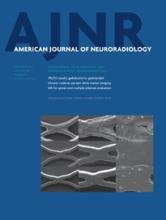Abstract
BACKGROUND AND PURPOSE: An animal spinal tumor model is needed to better simulate the clinical situation and to allow percutaneous puncture, which may provide an experimental platform for the new nonvascular interventional therapies. We established a rabbit spinal tumor model through a CT-guided percutaneous puncture inoculation technique for nonvascular interventional therapy.
MATERIALS AND METHODS: VX2 tumor cells were inoculated into the lumbar vertebrae of 32 rabbits through a CT-guided percutaneous puncture technique; then, the development of hind limb paraparesis was observed in the rabbits twice a day. MR imaging and CT were performed on days 14, 21, and 28 postinoculation and at the development of hind limb paraparesis. On days 21 and 28 postinoculation, 2 rabbits, whose imaging suggested successful modeling without hind limb paraparesis, were chosen on each day. The lumbar vertebrae were sampled from 1 rabbit for histopathologic examination, and the other rabbit underwent PET-CT examination before percutaneous vertebroplasty. Finally the lesion vertebrae were sampled for histopathologic examination.
RESULTS: The success rate of modeling was 90.6% (29/32) in our study. On day 21 postinoculation, successful modeling was achieved in 21 rabbits, with 19 having no hind limb paraparesis. On day 28 postinoculation, another 7 achieved successful modeling, and only 1 developed hind limb paraparesis. Percutaneous vertebroplasty treatment was successful for the 2 rabbit models.
CONCLUSIONS: Establishment of a rabbit spinal tumor model through a CT-guided percutaneous puncture technique and inoculation of VX2 tumor is easy and has a high success rate. The established model can be used to study nonvascular interventional therapies for spinal tumor, including percutaneous vertebroplasty.
ABBREVIATIONS:
- HLP
- hind limb paraparesis
- PVP
- percutaneous vertebroplasty
- © 2015 by American Journal of Neuroradiology
Indicates open access to non-subscribers at www.ajnr.org












